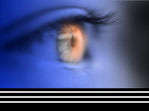Waukesha company's system matches DNA from babies, mothers
Expert says it could help in switched infant cases
By RICK BARRETT
of the Journal Sentinel staff
Last Updated: Sept. 6, 2001
A Waukesha company that makes devices to thwart baby abductions has developed a procedure to match DNA samples of babies
and their mothers in hospital birthing rooms, a measure that a national expert said could prove valuable in switched baby
cases.
The SureLink DNA Security kit from Innovative Control Systems uses a DNA sample from a baby's umbilical cord blood and
a sample from the mother's blood, both collected in the birthing room.
DNA is genetic material that can establish identity with nearly 100% accuracy. The samples are placed in a tamper-proof
pouch and filed in a secure area. If there is ever a question about the baby's relationship to his or her mother, the DNA
samples can be retrieved as evidence.
The problem of babies being given to the wrong mothers in hospital nurseries happens more than some people are aware of,
said Jeff Aldridge, a technical adviser to the National Center for Missing and Exploited Children and owner of a security
consulting firm in Durham, N.C.
Most of the switched baby incidents are resolved before the infant and mother leave a hospital. Incidents might last only
a few moments or a few hours, Aldridge said. But a few of them become public, high-profile cases.
"It's every parent's worst nightmare . . . to leave the hospital with the wrong baby," Aldridge said. "But with DNA sampling,
you can determine with certainty who a baby belongs to."
Innovative Control Systems recently received an award from the state Commerce Department and the Wisconsin Society of Professional
Engineers for developing infant security systems that use an ankle band equipped with electronic sensors.
If the band is removed from a baby, signaling a possible abduction, the sensors can trigger hospital nursery alarms and
security cameras. They also can be programmed to lock doors, deactivate elevators and specifically identify the baby who might
be abducted.
Abduction threat remains
Baby abductions have become very rare as the result of tightened security at hospitals across
the country, according to Aldridge. The threat still exists, he said, but the problem of switched babies in busy hospital
nurseries is more common.
Babies can't be accurately fingerprinted because their fingers have not developed the ridges necessary to make such identification
useful, according to Aldridge.
Thus, most hospitals use a combination of non-electronic identification bracelets, photos and baby footprints as ID systems,
he said.
But photos aren't always reliable. Bracelets fall off, and footprints are little more than smudges of ink from wrinkled
skin, Aldridge added.
Innovative Control Systems worked with a genetics services company in St. Charles, Mo., to develop its DNA security kit.
The company, Enegene, specializes in DNA sampling in paternity disputes.
The companies chose a plastic tamper-proof pouch, the same as law enforcement officials use in securing crime scene evidence,
for storing the DNA samples taken in birthing rooms.
Samples viable for a decade
The samples are derived from tiny drops of a baby's umbilical cord blood and from blood
from the mother during the baby's birth. The blood is stored as blots on special paper that will remain stable at least 10
years, said Terry White, president of Innovative Control Systems.
Besides identification, the DNA samples could be used to assess certain medical conditions and to examine changes that
occur with aging, White said.
Fifteen hospitals, from Texas to Massachusetts, are evaluating the DNA security kits in their birthing rooms. The kits
are expected to be available to hospitals nationwide this year.
Adding DNA sampling to a hospital's infant security system could be a deterrent to people who still try to abduct babies
from nurseries, White said.
"The people who do this will usually go to the hospitals with the least security," she said. "And security is not just
about electronic devices and DNA sampling. It also involves protocol and staffing issues."
Belong to parents
If hospitals adopt the DNA collecting in their birthing rooms, White said, she does not believe
they would share the samples with government DNA databases used in criminal prosecutions. The samples, she said, would belong
to the parents.
Also, the sampling would not be a substitute for other identification systems such as ankle bracelets, she said.
"But what this system does is say, 'This baby and this mother were tested in the birthing process, and they are an absolute
match,' " White said. It eliminates the human error that can be introduced later through record-keeping and mislabeled vials
of blood.
The DNA security kits are being tested at High Point Regional Medical Center in High Point, N.C. It's still early, but
the hope is the kits would be useful in child abduction or switched baby cases, said Bryan Koontz, hospital security director.
Lisa Hanson, a nurse midwife and associate professor in the College of Nursing at Marquette University, said that although
the blood samples might be valuable in establishing identity, they also might be overkill.
"It seems like the more technology we throw into the birthing process, the more it ruins the total experience," she said.
"Maybe we are worrying about the wrong thing. If babies weren't separated from their mothers" in hospital nurseries, "maybe
it would solve some problems."
Appeared in the Milwaukee Journal Sentinel on Sept. 7, 2001.

